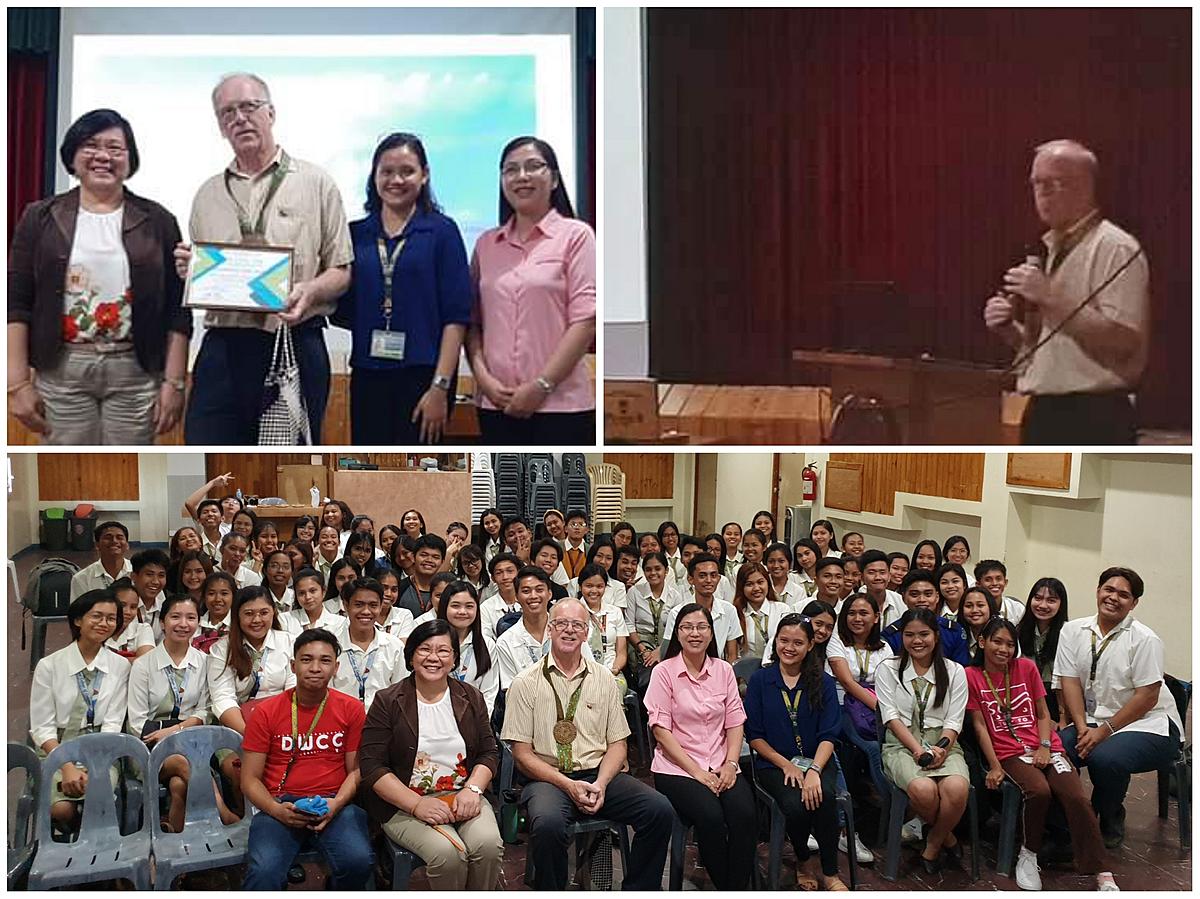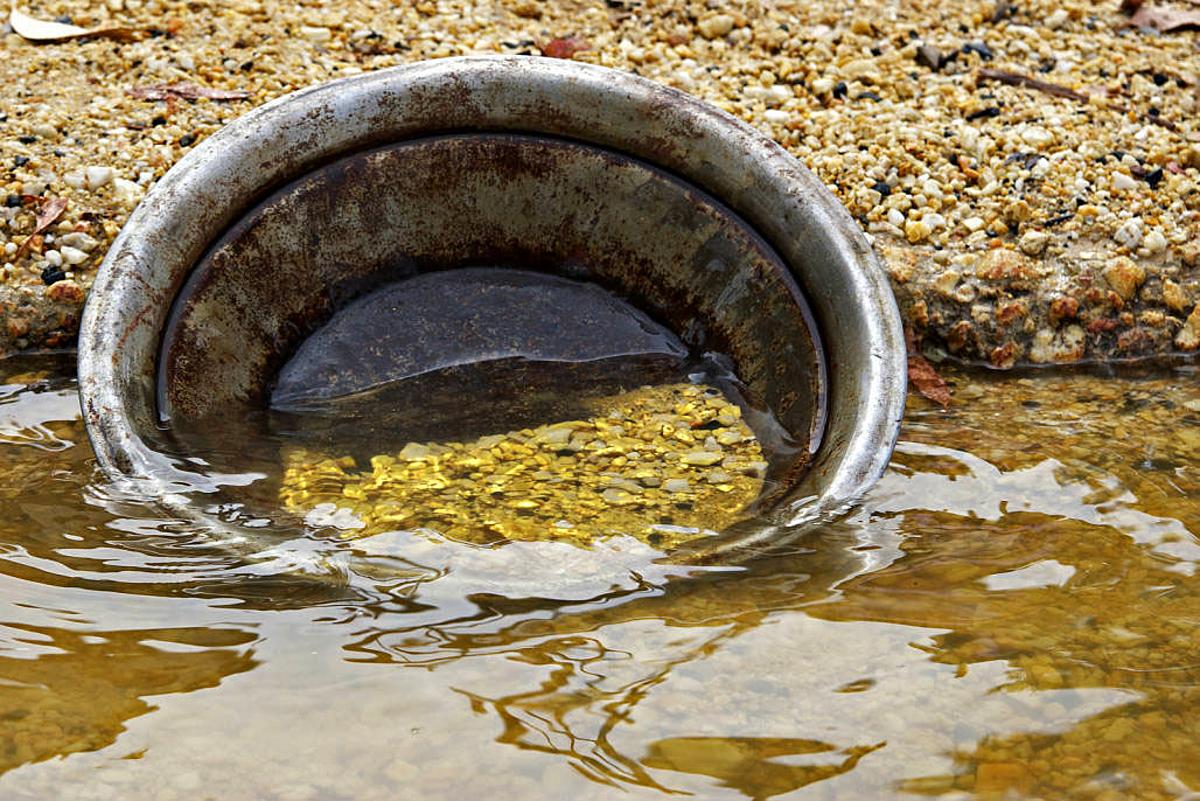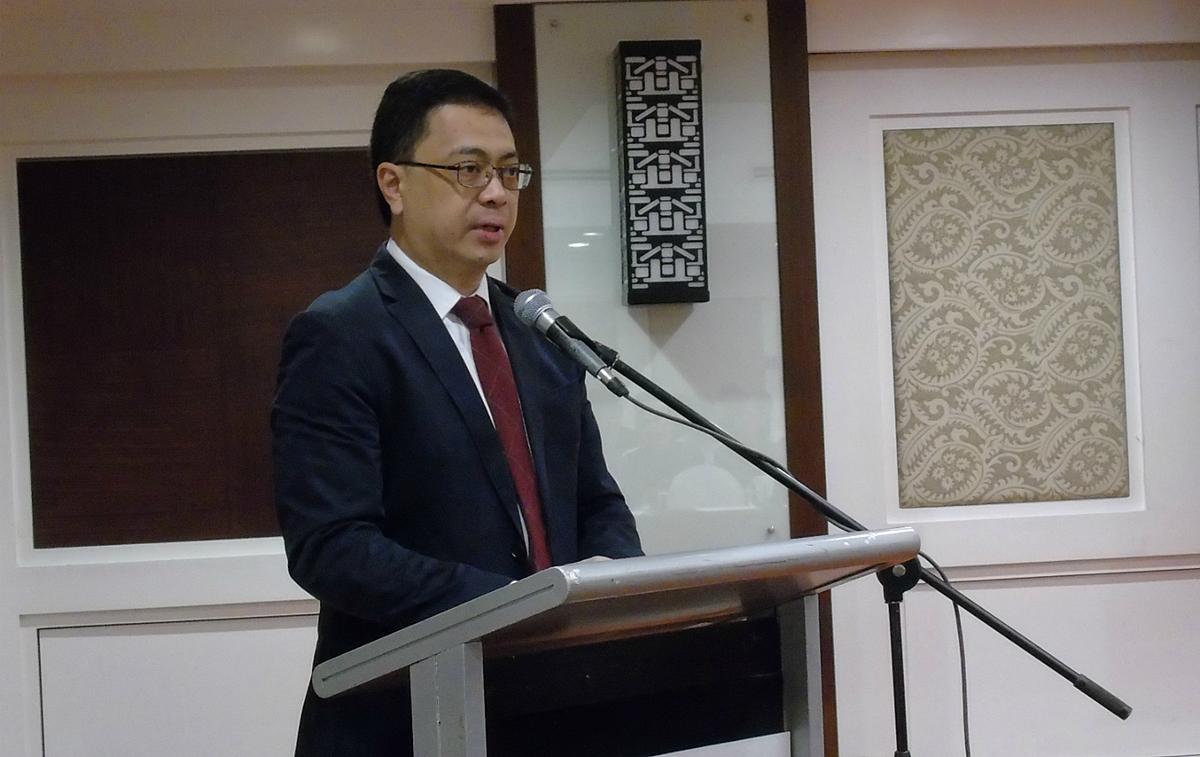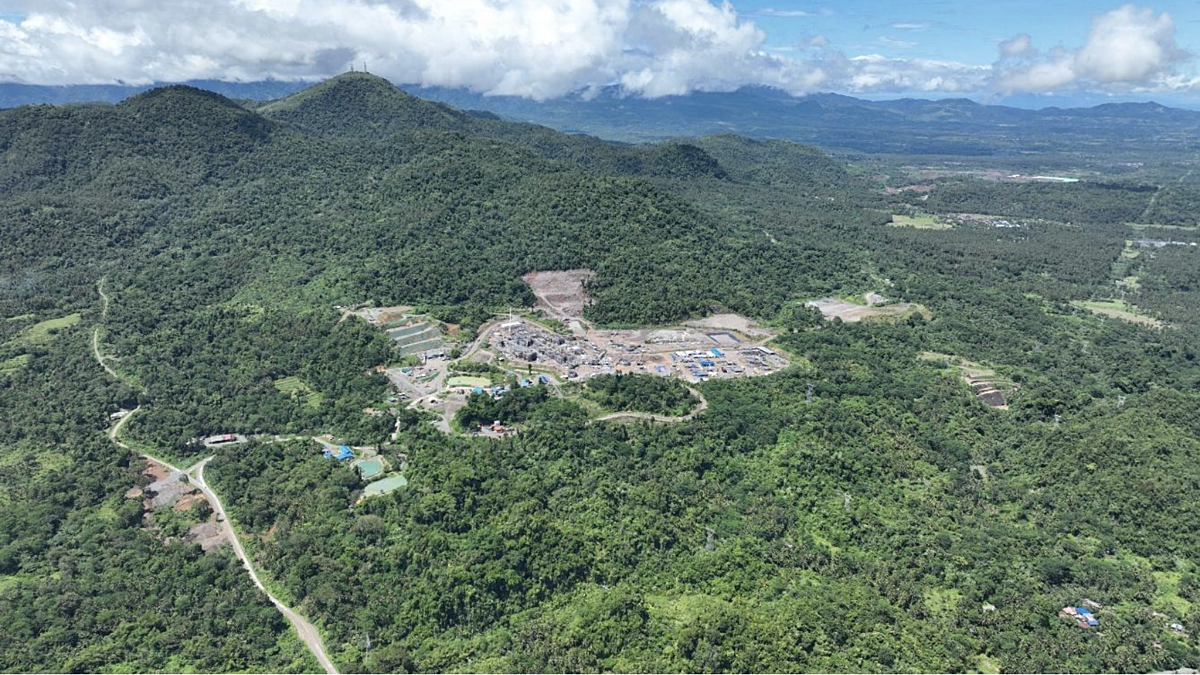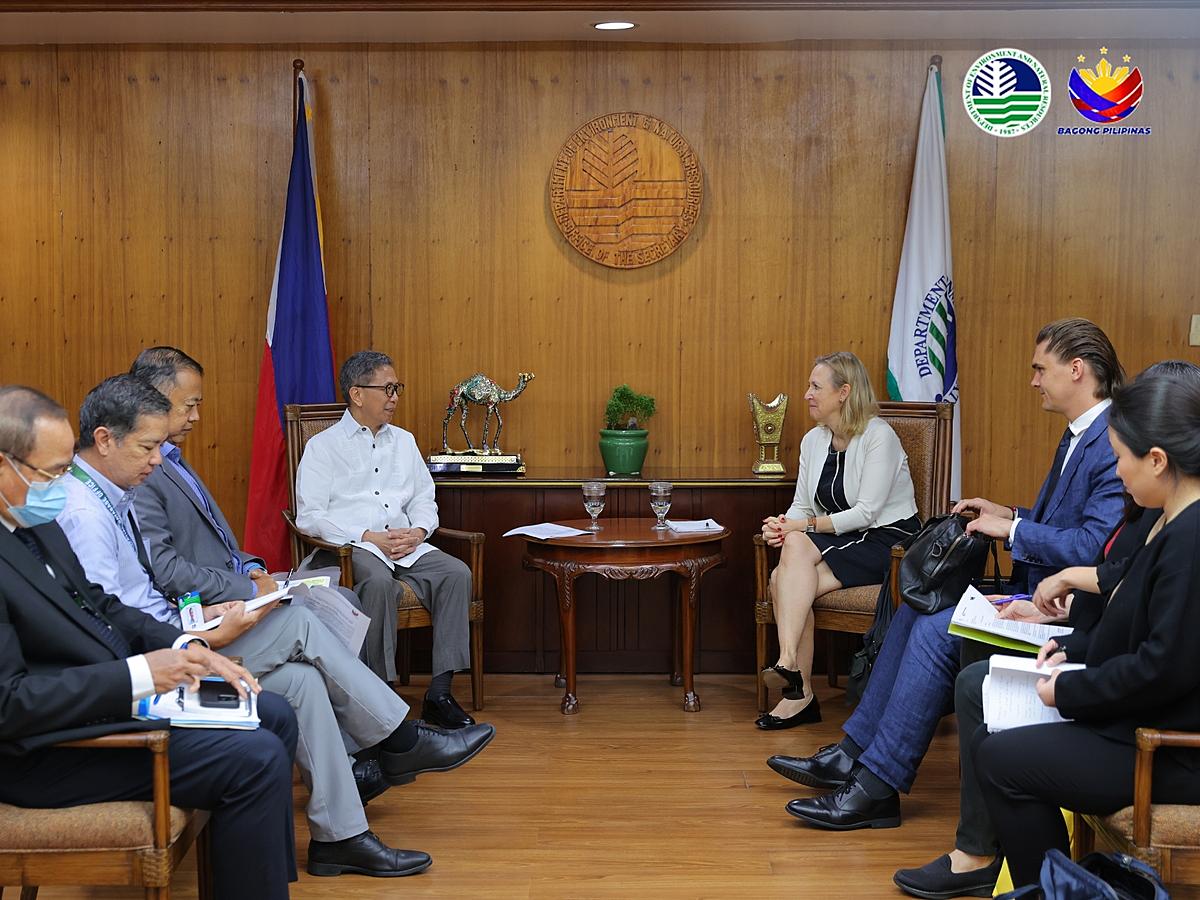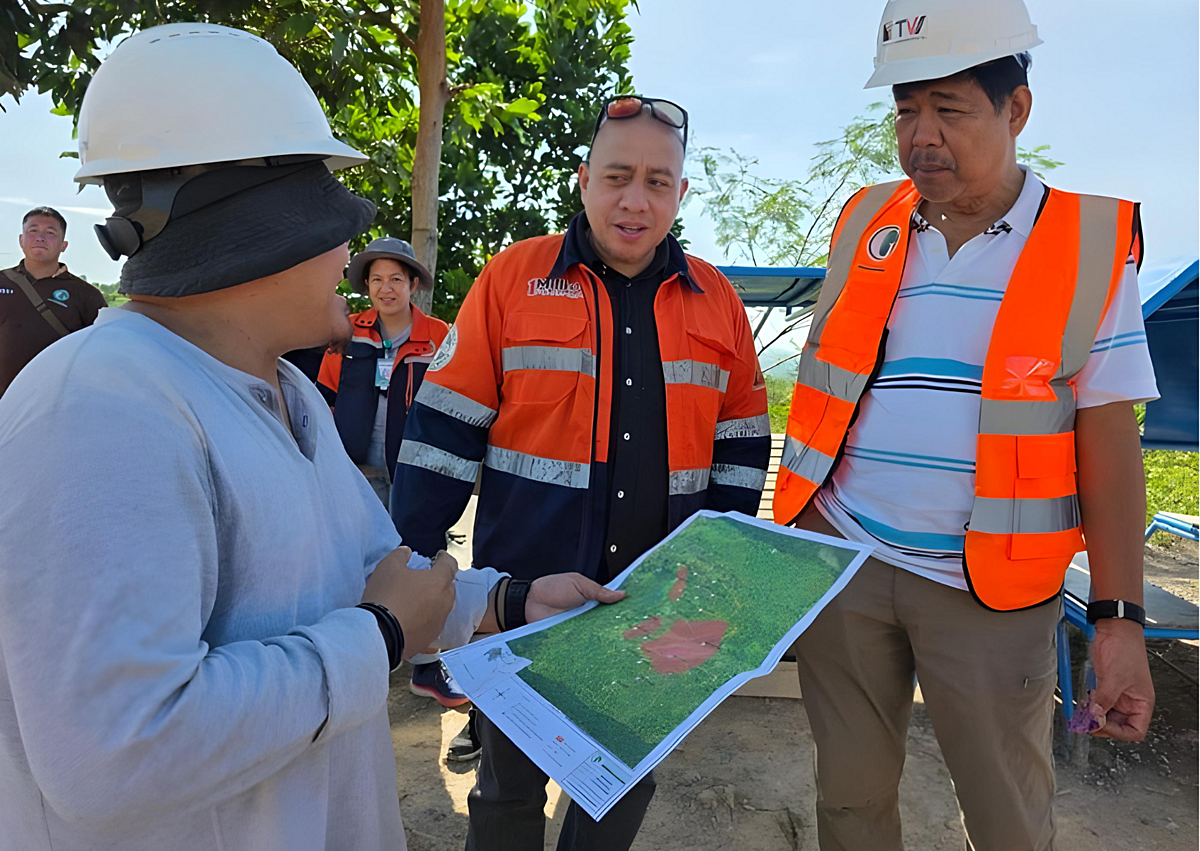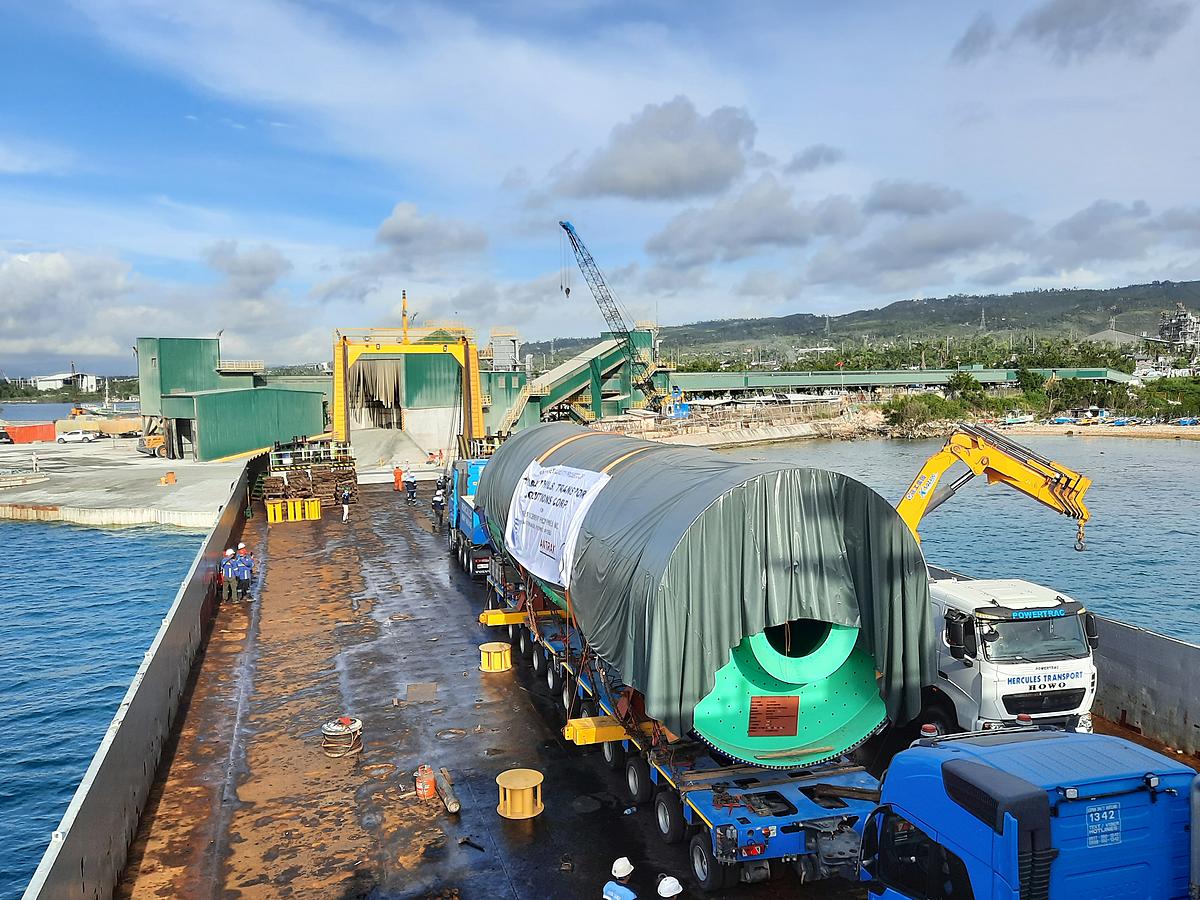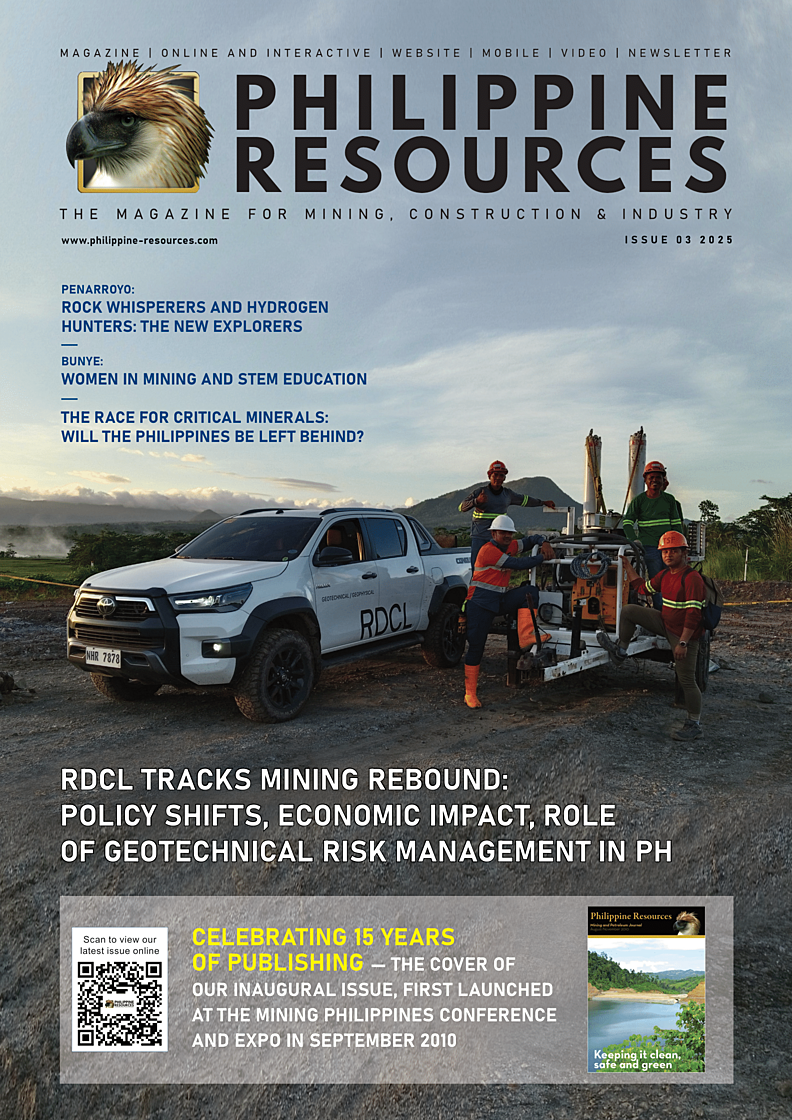Dr. Friedrich-Karl Bandelow received a Plaque of Appreciation from Divine World College of Calapan -- (Left to right) Dr. Aleli C. Dugan, CPA (Vice President for Academic Affairs), Ms Diana Kyth Conti (Teacher at Divine Word College of Calapan), and Engr. Rosvelinda Luzon Dequiros, LPT, Ph.D. (Dean, School of Education) (Photo credit: Dr. Friedrich-Karl Bandelow)
By Marcelle P. Villegas
The start of 2020 felt like doomsday when Taal Volcano suddenly erupted. It is the second most active volcano in the Philippines. When it erupted in January, it frightened many people when the sunny afternoon suddenly turned dark and terrifying with volcanic lightning visible through the dark volcanic ash. This resulted in the immediate mass evacuation of almost 1 million people.
When it comes to natural calamities, it is often unpredictable, but nature has a way of giving us clues of future disasters. From the point of view of geologists, volcanic eruptions are just part of the natural movements of the Earth’s crust.
Looking back on that day, it was Sunday afternoon on the 12th of January when Dr Friedrich-Karl Bandelow, a retired geologist, noticed from his window that the Taal Volcano looks unusual. Although the sky was blue and the weather was sunny, there was something strange about a giant cloud that formed a ring above the volcano.
[12 January 2020] “Taal Volcano woke me up. This is a view from my window in Calapan City.” (Photo by Dr Friedrich-Karl Bandelow)
In the late afternoon, the skies turned dark and Taal Volcano spewed ashes across Calabarzon, Metro Manila and some parts of Central Luzon and Ilocos Region. [1]. It was a phreato-magmatic eruption, an eruption resulting from the interaction between magma and water.
"The upper ring [of clouds] appears to be caused by a phreatic eruption that developed into a phreato-magmatic eruption.”
Although volcanic eruptions are disastrous and dangerous, it is no doubt that the volcanic lighting that evening was both frightening and fascinating as it gave a rare and beautiful light show in the night skies.
The Philippine Institute of Volcanology and Seismology (PHIVOLCS) issued Alert Level 4 which implies that hazardous explosive eruption is possible within hours to days. By 26 January 2020, PHIVOLCS observed an inconsistent but decreasing volcanic activity in Taal, thus they downgraded their warning to Alert Level 3. On 14 February 2020, Alert Level was finally on Level 2 due to consistent decreased volcanic activity. [1]
Educational Event in Calapan
Divine Word College of Calapan (DWCC) in Oriental Mindoro requested Dr. Friedrich-Karl Bandelow to give a lecture about Taal Volcano. He received this invitation from Engr. Rosvelinda Luzon Dequiros, LPT, Ph.D. (Dean, School of Education), Fr. Crispin A. Cordero, SVD (President, Divine Word College of Calapan), and Dr. Aleli C. Dugan, CPA (Vice President for Academic Affairs).
On 11 March 2020, he then gave a presentation at DWCC with the title "Volcanoes in General and Taal Volcano in Particular". It was a 90-minute lecture with a 30-minute Question and Answer portion. Dr. Bandelow said, “About 80 students from various courses attended the lecture. From each interested course, about 8 to 10 students were assigned and they later disseminated the information to their classmates.”
“It was enjoyable to teach and interact with young students. I also felt that I am part of my community in Calapan City,” Dr. Bandelow stated.
The purpose of the lecture was to give information about the recent Taal eruption and the history of that volcano. He covered the following topics: Basics About Volcanoes, Volcanoes in the Philippines, Are there Volcanoes in Mindoro?, Taal Volcano: Physiographic Elements, Which is bigger: Taal or Mayon?, Taal Volcano Eruption History, The January 2020 Eruption, Effects of Eruption, and Monitoring and Prediction.
“The question if there are volcanoes in Mindoro was of big interest. Some students were living near volcanoes in Naujan and Pola without knowing it. Of course, the question on Taal eruption’s impact on Calapan was also interesting,” he said.
Getting To Know The Volcano
Here are some key points from his lecture about Taal Volcano:
● Taal is 311 m high. It had a total of 42 eruptions since 1572
● Taal Volcano Island lies within the Taal Lake. Taal Lake lies within a 25-30 km Taal Caldera formed by explosive eruptions between 140,000 and 5,380 BP (Before Present). Each of these eruptions created extensive ash and ignimbrite deposits, reaching as far away as where Manila stands today.
● Since the formation of the caldera, subsequent eruptions have created a volcanic island within the caldera, known as Volcano Island.
● The center of the island, occupied by the 2-kilometers Main Crater with a single crater lake, was formed from the 1911 eruption. The island consists of different overlapping cones and craters which 47 have been identified. [2]
Dr. Bandelow also discussed the importance of the 1911 Taal Volcano eruption. In 1911, the volcano had violent eruptions. The crater floor was completely changed and the interior was created. There was complete destruction of Taal Island with a death toll of 1100 lives and hundreds of animals died as well. Ash was falling within a radius of about 300 km, 70 to 80 million m3 of ash. [2]
About the January 2020 eruption, he mentioned that the event started with a phreatic eruption. Phreatic eruptions are steam-driven explosions that occur when water beneath the ground or on the surface is heated by magma, lava, hot rocks, or new volcanic deposits. The intense heat of such materials (as high as 1,170° C for basaltic lava) may cause water to boil and flash to steam, thereby generating an explosion of steam, water, ash, blocks and bombs. [2]
Effects of the January 2020 eruption:
● More than 1 million people were evacuated.
● The volcano island is off-limits. About 8000 people lost their homes and cannot return.
● The area around Agoncillo and San Nicolas is badly damaged by fractures.
● Fish raising facilities in the Taal Lake were damaged.
● Water level of Taal Lake went down. Pansipit River dried up.
● Crater lake was falling dry and is recovering.
How does PHIVOLCS monitor the Taal Volcano? Here are some important eruption precursors:
● Increase in frequency of volcanic quakes and rumbling sounds
● Changes in the water temperature, level and bubbling or boiling activity on the lake
● Development of new or reactivation of old thermal areas like fumaroles, geysers or mud pots
● Ground inflation or ground fissuring - Often surveyed by means of satellite images (interferometry)
● Increase in temperature of ground probe holes on monitoring stations
● Strong sulfuric odor or irritating fumes similar to rotten eggs
● Fish killed and drying up of vegetation
Can PHIVOLCS predict the next eruption? PHIVOLCS will determine the alert level (0 to 5) based on the permanent survey of data. [2] Here is a guide:
● Level 3 indicates that an eruption could occur within the next days or weeks (or not!).
● Level 4 indicates that an eruption is an imminent risk and could occur now.
● Level 5 is on during a volcanic eruption with ash falls, lava flows, pyroclastic flows.
Conclusion: Volcanologists are in the position to describe the actual situation and the possible risks but they cannot schedule the events.
At the end of the lecture, Dr. Bandelow received a Plaque of Appreciation by the Divine Word College of Calapan.
About the Lecturer
Dr. Friedrich-Karl Bandelow is a retired geologist living in Calapan City. He studied geology at Johannes-Gutenberg University in Mainz/Germany and graduated as Master of Science in 1980. In 1981, he joined Montan Consulting GmbH, an international mining consulting company. He was assigned to exploration projects in Germany and Botswana. He arrived in the Philippines in 1983. From 1983 to 1987, he was seconded to a technical aide project as a consultant to the BED, now the Philippine Department of Energy. He later returned to Germany where he focused on his doctorate thesis while working on international projects.
In 1997, Dr. Bandelow received his Ph.D. in Natural Science (Dr. rer. nat.) from Johannes-Gutenberg University in Mainz. From 2011 to 2013, he settled in Jakarta, Indonesia after being assigned as President Director of PT DMT Indonesia. After a year, he returned to the Philippines and based at his home office in Calapan City. He retired from permanent employment in 2016 and is still occasionally working as an independent consultant in the region.
Dr. Bandelow is a member of the United Nations - Task Force for Resource and Reserve Classification. He is a registered European Geologist with the European Federation of Geologists. Dr. Bandelow has written 23 publications in international journals with focus on resource classification and coal geology.
-----
Acknowledgement: Thank you, Dr. Friedrich-Karl Bandlow, Engr. Rosvelinda Luzon Dequiros, Fr. Crispin A. Cordero and Dr. Aleli C. Dugan, CPA of Divine Word College of Calapan..
-----
References:
[1] Retrieved from https://en.wikipedia.org/wiki/2020_Taal_Volcano_eruption
[2] Bandelow, Friedrich-Karl (11 March 2020). "Volcanoes in General and Taal Volcano in Particular". Lecture at Divine Word College of Calapan, Oriental Mindoro.

